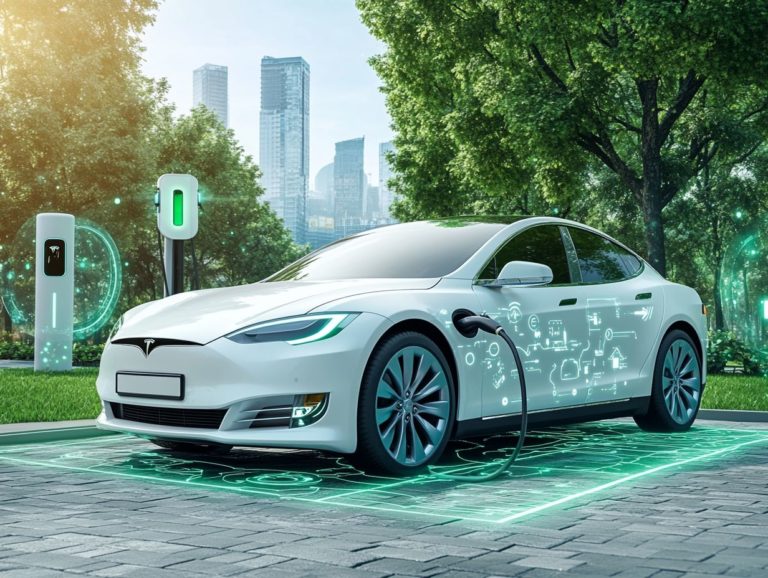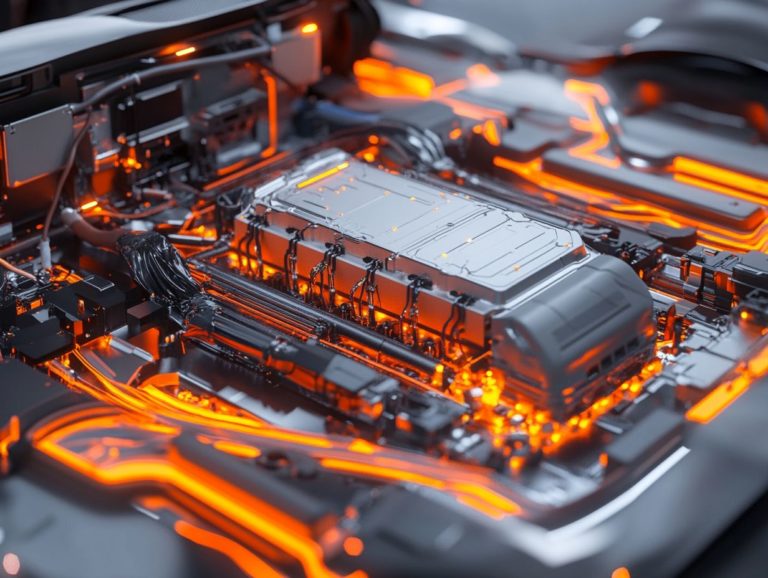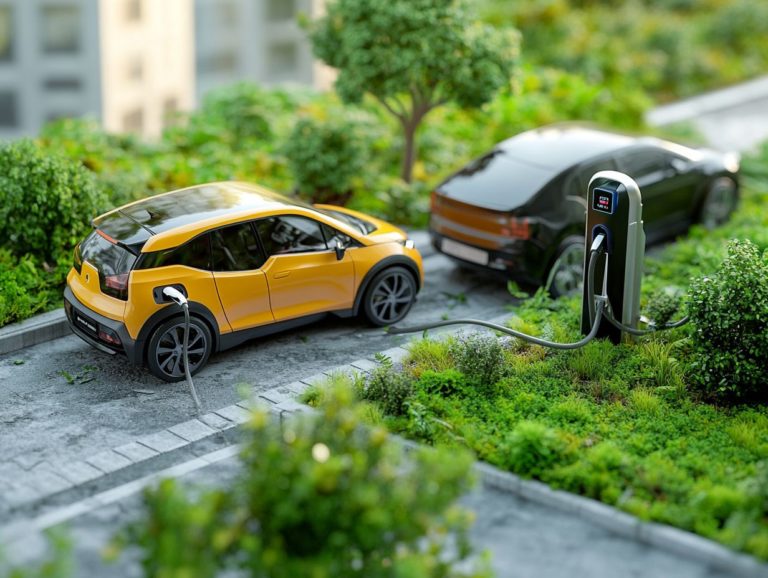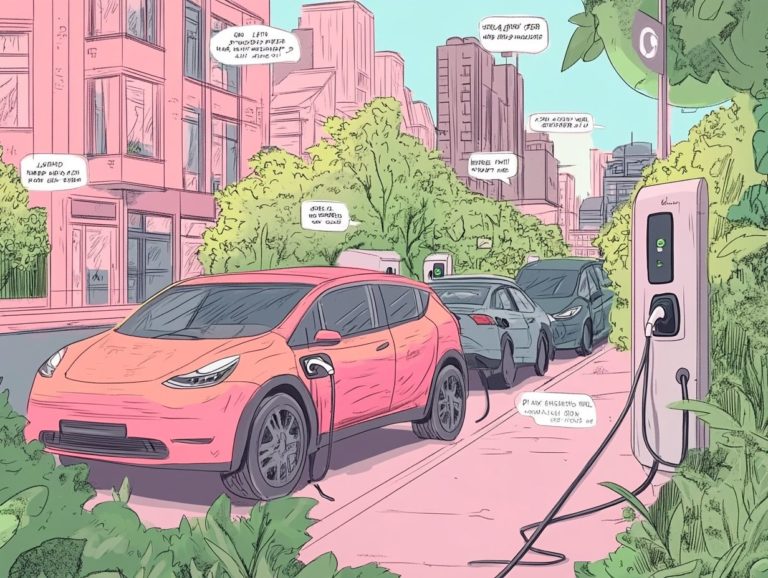How Do Electric Cars Work?
Electric cars are revolutionizing your perspective on transportation by seamlessly blending innovation with sustainability.
This article delves into what electric cars are all about. We highlight essential components like battery packs and electric motors while explaining how they function.
Discover the incredible benefits of electric cars, from minimizing environmental impact to cutting down on fuel expenses.
We ll tackle the challenges you might face, such as range limitations and the current state of charging infrastructure.
Join us as we unpack everything you need to know about electric vehicles!
Contents
- Key Takeaways:
- Overview of Electric Cars
- Key Components of Electric Cars
- How Electric Cars Work
- Benefits of Electric Cars
- Challenges and Limitations
- Frequently Asked Questions
- How do electric cars differ from traditional cars?
- How do electric cars charge their batteries?
- Do electric cars have the same performance as traditional cars?
- How far can electric cars travel on a single charge?
- Are there any environmental benefits to using electric cars?
Key Takeaways:
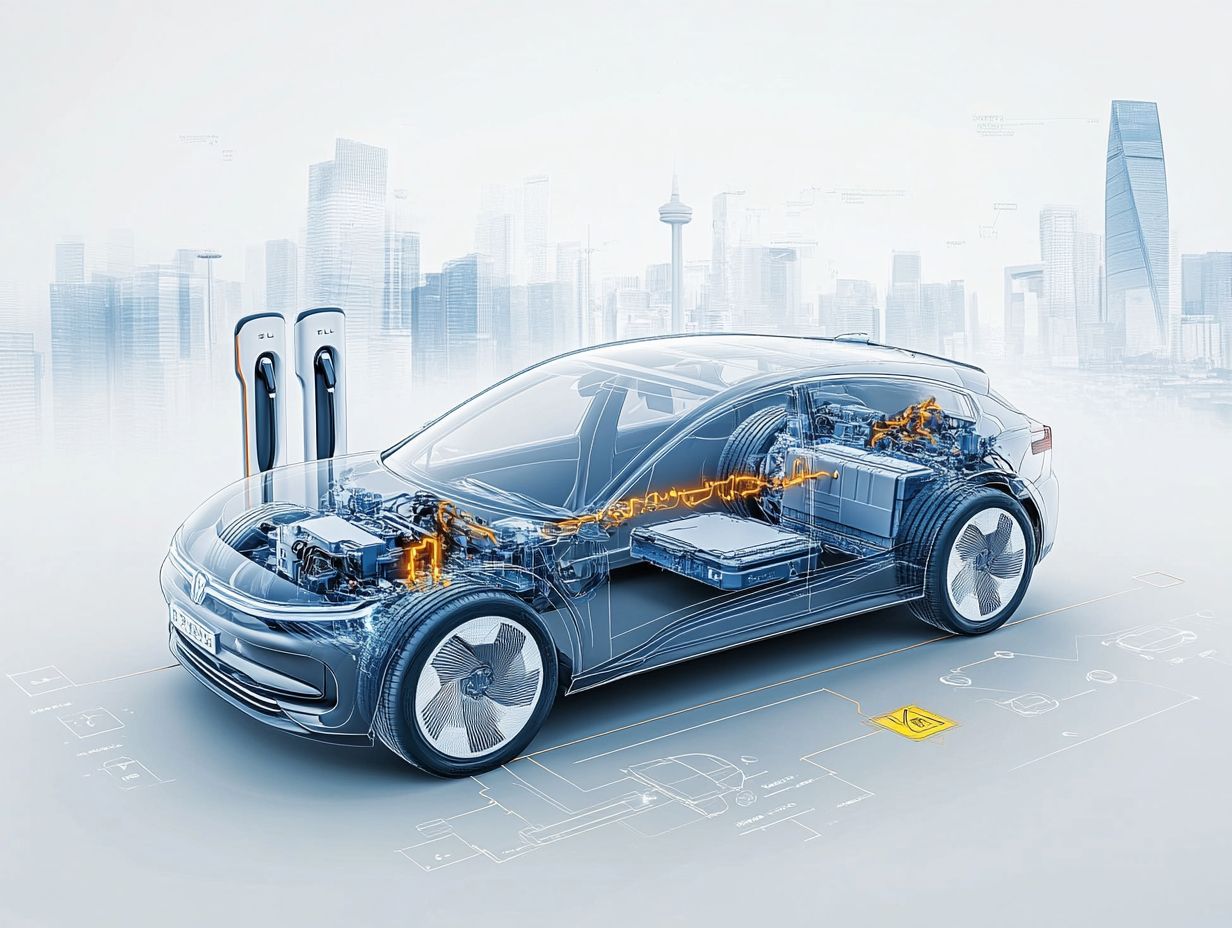
- Electric cars use a battery pack and electric motor to power the vehicle, eliminating the need for traditional gasoline engines.
- The electricity stored in the battery pack is converted into power to drive the motor, providing a smooth and quiet driving experience.
- Electric cars offer various benefits, including reduced environmental impact and cost savings. However, they face challenges such as limited range and charging infrastructure.
Overview of Electric Cars
Electric cars, especially battery electric vehicles (BEVs), are transforming the automotive landscape by providing a sophisticated alternative to traditional internal combustion engine vehicles. Thanks to innovations in electric motor technology and traction battery packs, these vehicles deliver impressive acceleration and zero emissions.
This makes them an attractive choice for those who prioritize environmental sustainability.
The rising popularity of electric cars is reshaping driving habits and advancing clean transportation initiatives in various regions, such as California, where incentives like the Clean Vehicle Rebate Project are fostering their growth.
What are Electric Cars?
Electric cars, or electric vehicles (EVs), are powered entirely by rechargeable lithium-ion batteries and use electric motors for movement.
These cutting-edge vehicles come in various types. You ll primarily encounter battery electric vehicles (BEVs), which rely solely on electrical energy stored in their batteries, and plug-in hybrid electric vehicles (PHEVs), which combine an internal combustion engine with an electric motor for enhanced efficiency.
Unlike traditional vehicles that consume gasoline or diesel, EVs produce zero tailpipe emissions, significantly shrinking their environmental footprint.
The main components of an electric car include:
- Battery pack
- Electric motor
- Regenerative braking system (which helps recharge the battery while slowing down)
- Onboard charger (in some cases)
This advanced technology offers a quieter ride and reduces operating costs, making it an attractive option for eco-conscious consumers.
Key Components of Electric Cars
Electric cars consist of several essential components that collaborate to deliver an efficient and high-performance driving experience.
At the heart of this sophisticated system are the electric motor, traction battery pack, and advanced charging systems. Each element plays a vital role in ensuring optimal performance and reliability on the road.
Battery Pack and Electric Motor
The traction battery pack and electric traction motor are crucial elements of an electric vehicle, delivering both energy storage and movement seamlessly.
The traction battery pack employs high energy density lithium-ion batteries, allowing you to store significant amounts of energy with remarkable efficiency. This technology not only extends your driving range but also contributes to a lighter vehicle design, enhancing overall efficiency.
When you need that stored energy, the electric traction motor effortlessly transforms it into motion, facilitating rapid acceleration and smooth performance. This harmonious interaction between the components minimizes energy loss and maximizes power delivery.
This offers you an elevated driving experience while also reducing your environmental footprint. This sophisticated synergy is vital for the future of sustainable transportation.
Join the electric revolution today and drive towards a sustainable future!
Charging System
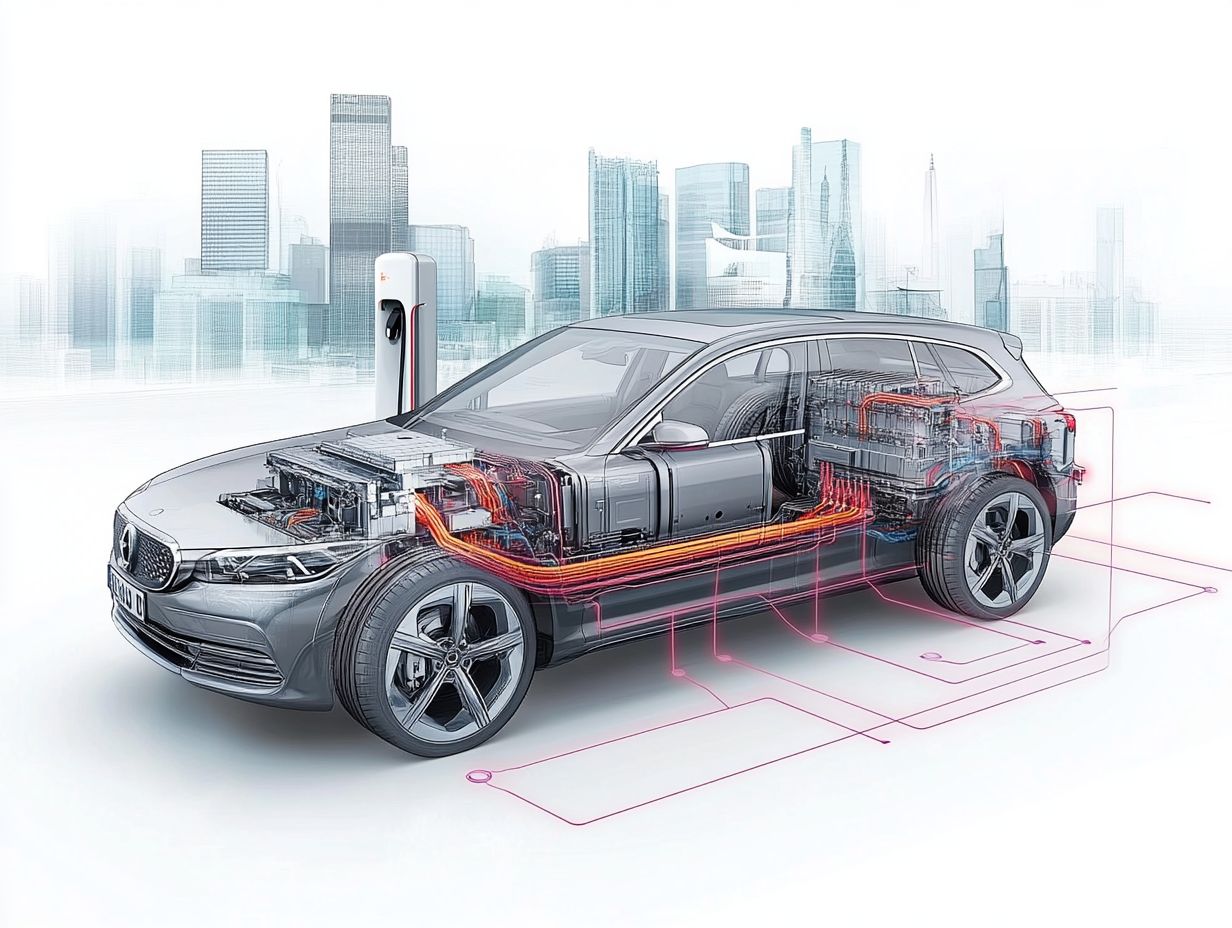
The charging system for electric cars includes a range of equipment, from basic level 1 charging stations that use standard outlets to sophisticated DC Fast Charging solutions.
Each type of charger caters to specific needs. For instance, level 2 chargers are popular choices for residential areas and can recharge vehicle batteries within a few hours. DC Fast Chargers, on the other hand, deliver substantial power in mere minutes, making them perfect for quick stops during longer journeys.
The expanding network of charging stations is vital for fostering the widespread adoption of electric vehicles. This ensures that you can easily access charging options wherever your travels take you. Electric vehicle supply equipment is key to this ecosystem, providing the technology needed to complete the charging process while enhancing overall safety and efficiency.
How Electric Cars Work
Electric cars function by transforming stored electricity into mechanical energy through a series of advanced processes. This intricate operation involves power electronics, DC/DC converters, and thermal systems, all working together to deliver an efficient driving experience.
Electricity Storage and Conversion
Electric cars store electricity in their traction battery packs. These packs leverage advanced power electronics and DC/DC converters to manage and convert energy for use by the electric motor.
These battery packs act as reservoirs, holding substantial amounts of electrical energy sourced from various avenues, including regenerative braking a system that captures energy while braking to recharge the battery and grid charging. Once the energy is stored, the energy management system takes charge, efficiently regulating the flow of electricity.
This meticulous energy distribution is critical; it influences the vehicle’s acceleration and responsiveness, as well as its overall efficiency and range. Effective energy management is essential for enhancing performance and extending the lifespan of both the battery and the electric motor.
Powering the Motor
The electric traction motor is what gives you the lightning-fast acceleration that electric cars are famous for, thanks to its sleek design and cutting-edge power electronics.
This high-performance marvel converts electrical energy directly into mechanical energy, eliminating the complexities and inefficiencies that come with traditional combustion engines. Unlike gas-powered vehicles, these motors deliver instantaneous torque, creating a driving experience that feels effortlessly smooth and responsive.
With fewer moving parts, electric motors mean less wear and tear, enhancing reliability and keeping maintenance costs low.
The seamless integration of regenerative braking systems allows for superior energy recovery, further boosting overall efficiency. As a result, you can enjoy a quieter, more exhilarating ride while contributing to a more sustainable future.
Benefits of Electric Cars
Electric cars come with amazing benefits that you won’t want to miss! They contribute significantly to the environment by reducing emissions, a vital step we must take now for a sustainable future!
Electric cars also offer the potential for significant cost savings and impressive energy efficiency, making them an excellent choice for anyone seeking clean transportation options.
Environmental Impact
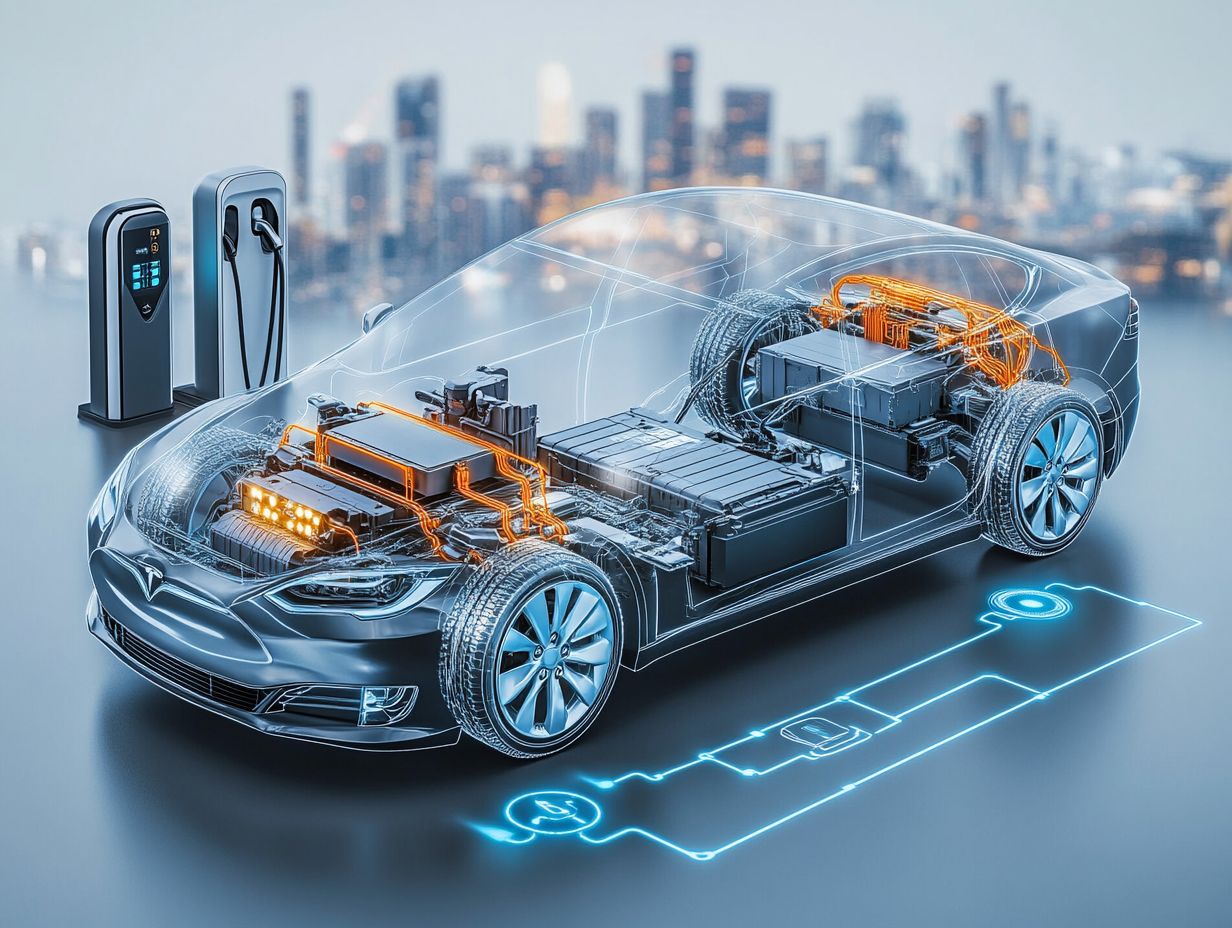
Electric cars play an important role in significantly reducing greenhouse gas emissions, achieving zero emissions during operation a vital aspect of fostering clean transportation.
By harnessing renewable energy sources like solar or wind power for charging, you can further lessen the environmental impacts linked to fossil fuel consumption.
Beyond these advantages, innovations like regenerative braking systems enable you to recover energy that would typically be lost during braking, thereby enhancing overall efficiency.
This technology not only extends the vehicle’s range but also minimizes wear on traditional braking components, resulting in less waste. As a result, embracing electric vehicles aligns seamlessly with global efforts from organizations and governments dedicated to diminishing pollution levels and combating climate change, ultimately creating a healthier planet for future generations.
Join the electric revolution for a greener tomorrow!
Cost Savings and Efficiency
Owning an electric car can lead you to substantial cost savings over time, thanks to lower operational costs and impressive energy efficiency, along with enticing options for extended battery warranties.
The financial perks of these vehicles go beyond just slashing your fuel bills; they often require less maintenance due to having fewer moving parts compared to traditional combustion engines. This means you can expect significant savings on routine services and repairs. Plus, various government incentives, such as tax rebates and grants, make electric vehicles even more appealing.
By leveraging these incentives along with the lower costs of charging instead of refueling, it becomes clear that investing in an electric car not only benefits the environment but also translates into remarkable economic advantages for you as a consumer.
Challenges and Limitations
Despite their numerous advantages, electric cars encounter several challenges and limitations that you should consider. These include issues related to charging infrastructure, driving range, upfront cost, and their overall availability in the market.
Range and Charging Infrastructure
Range anxiety is a prevalent concern for electric car owners, closely linked to the availability of charging stations and the efficiency of rapid charging methods that quickly recharge electric car batteries.
This apprehension often intensifies in regions with limited charging options, causing potential buyers to hesitate in their transition to electric vehicles. However, as more charging stations are built, these concerns will lessen.
Advancements like ultra-fast charging and wireless technologies dramatically cut down charging times, enhancing overall convenience. As you become more aware of these improvements, your confidence in electric vehicles will grow, fostering greater acceptance of this sustainable option.
Ultimately, a strong charging network has the potential to revolutionize the driving experience, encouraging more individuals to embrace electric vehicles and contribute to a cleaner future.
Cost and Availability
The upfront cost of battery electric vehicles (BEVs), which are cars that run exclusively on electricity, stands as a significant barrier to your journey toward adopting electric cars, especially with variations in availability across different markets.
This financial hurdle can be eased by government incentives and tax rebates, which have become pivotal in your decision-making process. As you explore your options, you’ll likely weigh these financial advantages against the rapidly evolving landscape of battery technology, which plays a crucial role in shaping overall vehicle pricing.
The limited availability of specific models in certain regions can greatly influence your choices, possibly nudging you toward more conventional vehicles. Knowing about these factors helps you navigate the complexities of embracing a more sustainable automotive future, whether you’re a manufacturer or a discerning buyer.
Frequently Asked Questions
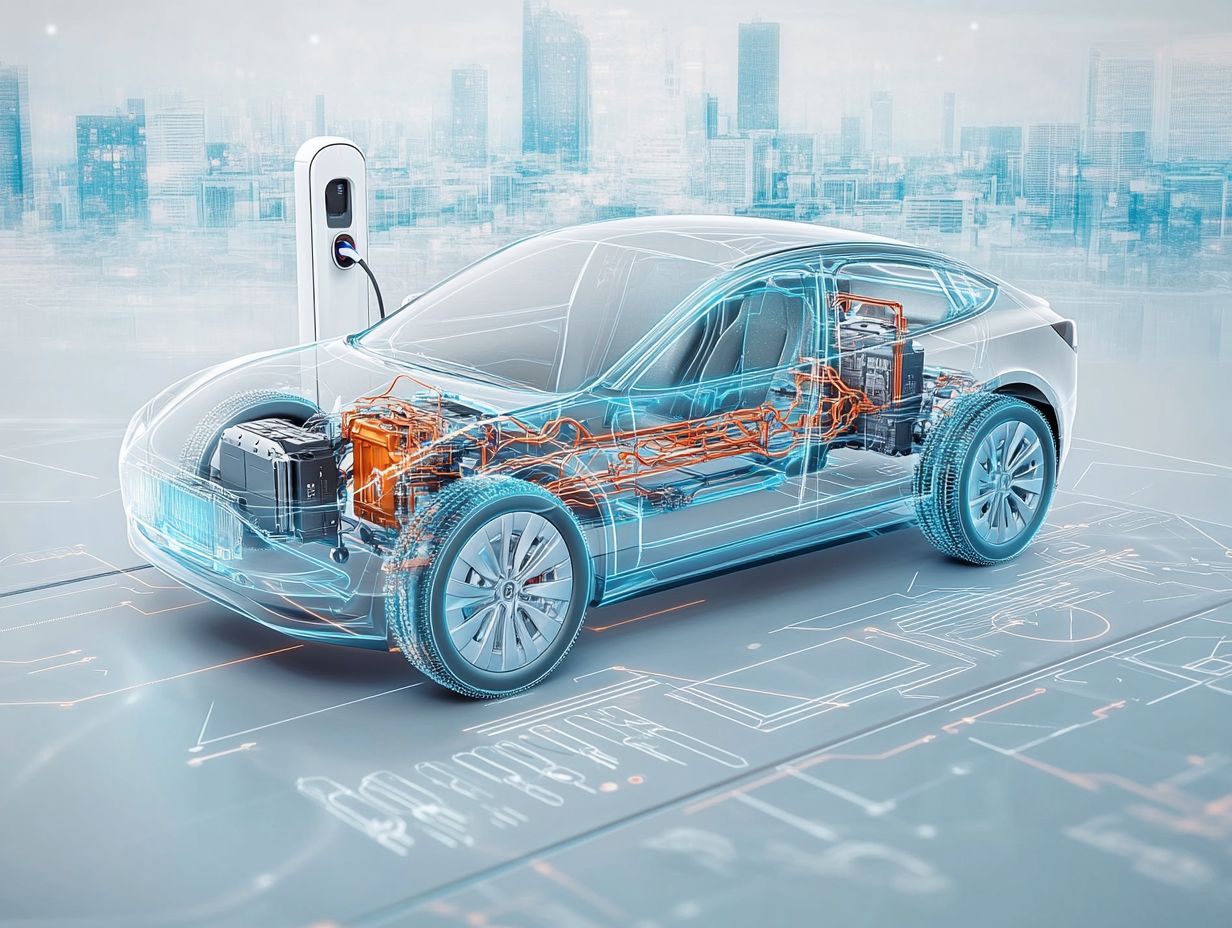
What are electric cars and how do they work?
Electric cars are vehicles that run solely on electricity and do not require any gasoline. They work by using a battery-powered electric motor instead of an internal combustion engine.
How do electric cars differ from traditional cars?
Electric cars differ from traditional cars mainly because of their power source. Instead of gasoline, they run on electricity, which powers their motors and moves the vehicle.
How do electric cars charge their batteries?
Electric cars can be charged by plugging them into a charging station or using a home charging unit. They can also recharge through a process called regenerative braking, which captures energy from braking and stores it back in the battery.
Do electric cars have the same performance as traditional cars?
Electric cars can perform just as well as traditional cars, depending on the model you choose. They often offer quick acceleration because of the instant torque from the electric motor.
How far can electric cars travel on a single charge?
The distance an electric car can travel on a single charge varies by model and battery size. On average, most electric cars can go between 100-250 miles (160-400 km) on one charge.
Are there any environmental benefits to using electric cars?
Absolutely! Imagine driving a car that produces zero emissions it’s not just a dream; it’s electric! This feature significantly reduces air pollution and helps combat climate change.
They also harness renewable energy sources like solar or wind power to charge their batteries, making them a greener choice compared to traditional cars.
Now is the time to explore electric vehicle options and join the movement towards a cleaner environment!

